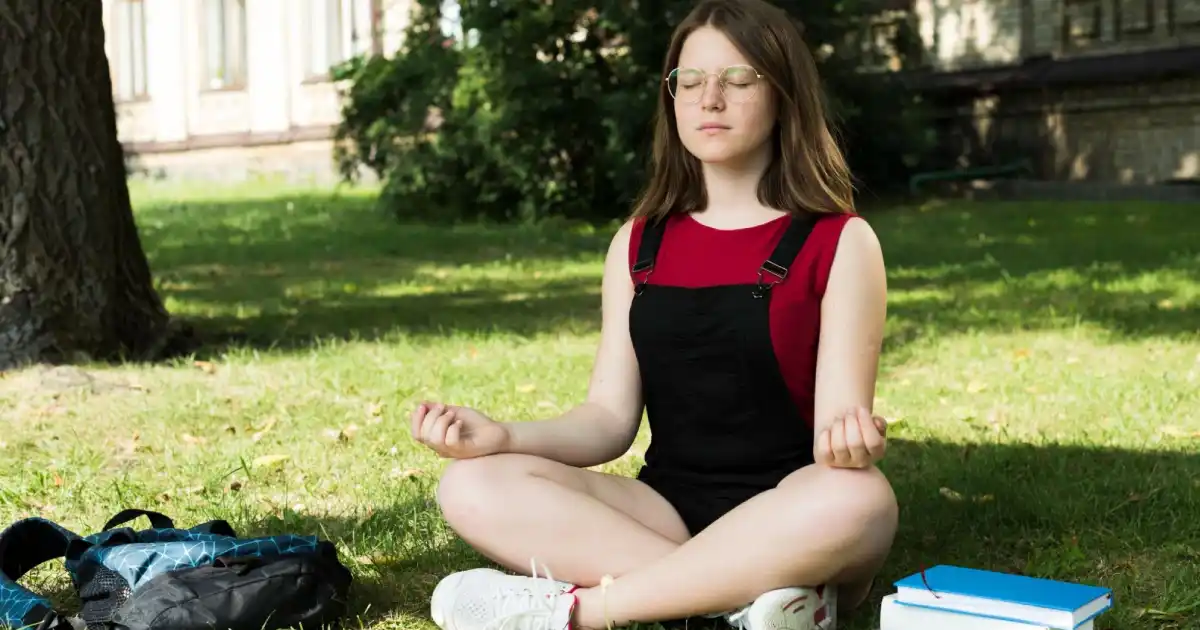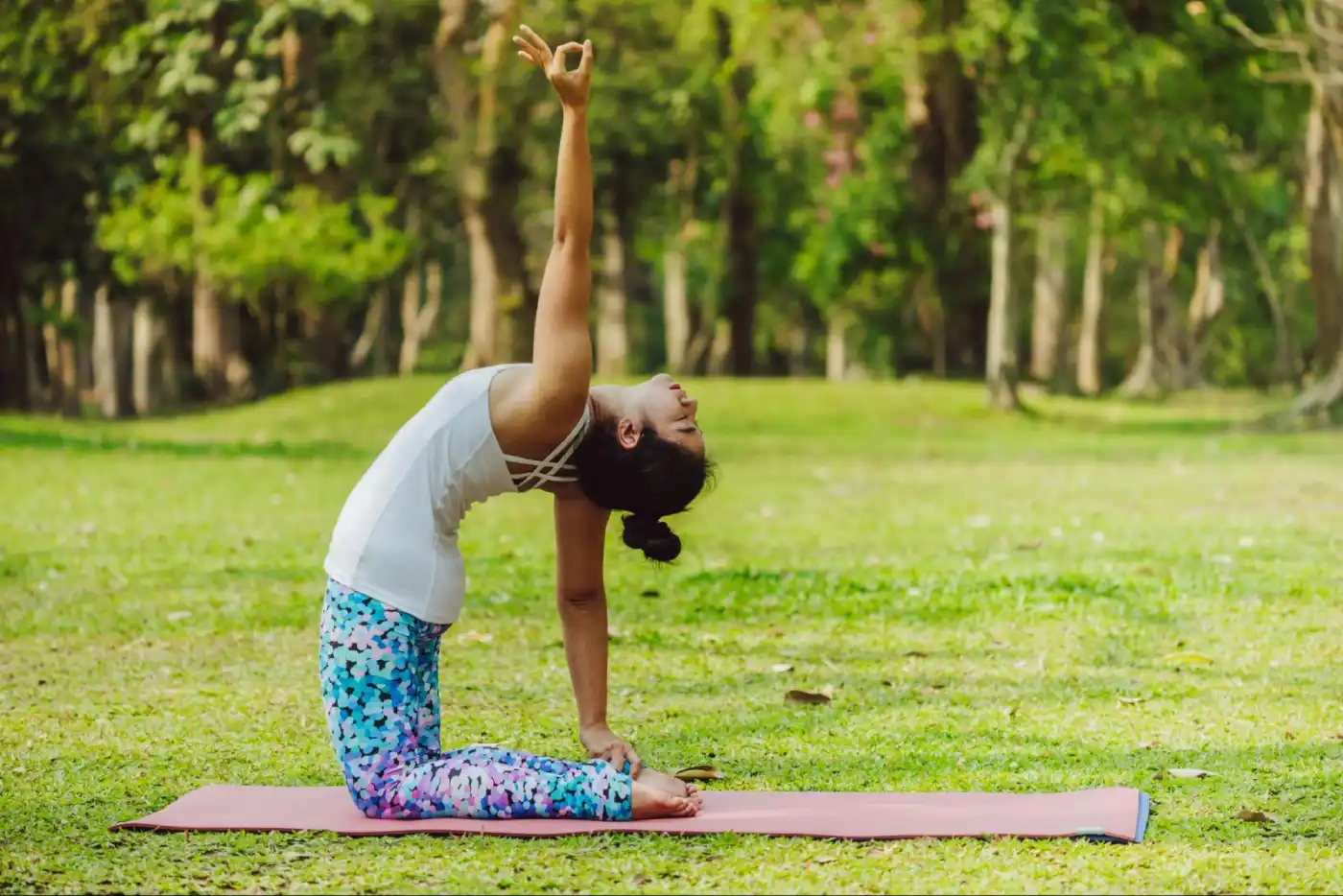
Get A Free Quote

In today’s fast-paced academic world, students constantly juggle studies, deadlines, peer pressure, and digital distractions. This overload often leads to stress, lack of focus, and unhealthy habits. Amid these challenges, yoga for students stands out as a powerful and holistic solution. More than just a physical activity, it helps cultivate discipline, sharpen mental clarity, and promote a healthy lifestyle qualities essential for both academic success and personal growth.
By calming the nervous system and improving emotional balance, yoga helps students stay grounded even in high-pressure situations. Regular practice makes it easier to manage distractions, stay motivated, and develop the mental resilience essential for long-term success.
Modern students face intense stress stemming from academic performance, social dynamics, career expectations, and prolonged screen time. Consequently, issues such as poor sleep, weak memory, posture-related problems, and emotional imbalances are increasingly common.
Integrating yoga into student life offers numerous benefits, such as:
Hence, whether it’s morning yoga before class or simple stretches during study breaks, yoga can significantly improve students' daily routines and overall mental performance.
Brain yoga for students refers to techniques that stimulate both hemispheres of the brain, thereby improving memory, focus, and learning ability. These exercises are also a key part of yoga for mental health, supporting better emotional balance and mental clarity in daily life.
Thus, even 10 minutes of brain yoga daily can help students perform better in the classroom and reduce exam-related anxiety.
A short session of morning yoga for students sets a positive tone for the day. It wakes up the body, clears the mind, and prepares students for academic activities ahead.
Key Benefits:
| Pose | Purpose |
|---|---|
| Tadasana (Mountain Pose) | Grounds and centers the mind |
| Cat-Cow Pose | Loosens the spine and improves mobility |
| Surya Namaskar (Sun Salutation) | Activates the full body |
| Tree Pose (Vrikshasana) | Enhances balance and concentration |
| Sukhasana with Deep Breathing | Promotes calmness and mindfulness |
Just 15 minutes every morning can boost productivity, improve attention span, and uplift mood throughout the day.

The best yoga practices for students combine postures, breathwork, and meditative techniques aimed at enhancing focus and well-being.
| Pose | Benefits |
|---|---|
| Tree Pose | Improves balance and concentration |
| Child’s Pose | Relieves stress and calms the nervous system |
| Cobra Pose | Reduces fatigue and strengthens the spine |
| Legs-Up-the-Wall | Eases tiredness and mental exhaustion |
| Bridge Pose | Boosts energy, confidence, and flexibility |
These simple poses require no special equipment, making them perfect for beginners and accessible anytime, anywhere.
Yoga instills more than just physical flexibility—it fosters inner discipline and mental clarity. As students continue to practice regularly, they naturally develop:
Moreover, these qualities extend beyond yoga sessions, supporting improved academic behavior, emotional regulation, and interpersonal relationships.
Meditation offers students a powerful tool to manage emotions, increase self-awareness, and stay focused—especially during exams or high-stress periods.
Benefits of Meditation:
When paired with brain yoga for students, meditation becomes even more effective—helping to improve memory and concentration while building a strong mental foundation for learning and personal growth.
Building a yoga habit is easier than it seems. Here’s how students can get started:
Consistency is key, small, regular efforts lead to long-lasting benefits in both mind and body.
Yoga for students is not just a health practice—it’s a life skill. It teaches balance, builds inner strength, and fosters a mindset geared for success. Whether you're starting with basic poses, morning routines, or brain yoga techniques, each step brings students closer to a more focused, disciplined, and emotionally resilient life.
Start today—even 15 minutes of mindful movement can spark positive change. Let yoga be the compass that guides students toward a future built on clarity, calmness, and confidence.
Yes. It’s completely safe and highly beneficial. Beginners should start with simple poses under proper guidance. With the right approach, yoga can support both physical development and emotional well-being in growing minds.
Morning is ideal for boosting clarity and energy; however, evening sessions also help release stress and promote better sleep. Ultimately, the best time is when students can practice consistently and mindfully.
Even 15–20 minutes a day can deliver noticeable results when practiced consistently. Over time, this small daily commitment builds powerful habits and long-term mental resilience.